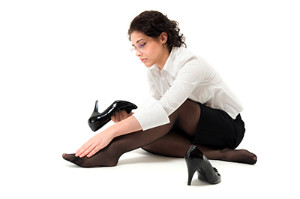 It is a commonly known fact that high heels are bad for you, with prolonged wearing leading to both a multitude of short-term problems such as corns and long-term problems such as bunions and back pain. Although women’s shoes like high heels are a popular fashion staple, they are actually considered improperly-fitting shoes that are bad for your heels, arches, and overall foot health. It is suggested to avoid heels that are higher than 2 to 3 inches, and to look for heels that have enough room in the front so that you are able to move your toes.
It is a commonly known fact that high heels are bad for you, with prolonged wearing leading to both a multitude of short-term problems such as corns and long-term problems such as bunions and back pain. Although women’s shoes like high heels are a popular fashion staple, they are actually considered improperly-fitting shoes that are bad for your heels, arches, and overall foot health. It is suggested to avoid heels that are higher than 2 to 3 inches, and to look for heels that have enough room in the front so that you are able to move your toes.
High heels have a history of causing foot and ankle problems. If you have any concerns about your feet or ankles, contact one of our podiatrists from Lovely Foot Associates, PC. Our doctors can provide the care you need to keep you pain-free and on your feet.
Effects of High Heels on the Feet
High heels are popular shoes among women because of their many styles and societal appeal. Despite this, high heels can still cause many health problems if worn too frequently.
Which Parts of My Body Will Be Affected by High Heels?
What Kinds of Foot Problems Can Develop from Wearing High Heels?
How Can I Still Wear High Heels and Maintain Foot Health?
If you want to wear high heeled shoes, make sure that you are not wearing them every day, as this will help prevent long term physical problems. Try wearing thicker heels as opposed to stilettos to distribute weight more evenly across the feet. Always make sure you are wearing the proper shoes for the right occasion, such as sneakers for exercising. If you walk to work, try carrying your heels with you and changing into them once you arrive at work. Adding inserts to your heels can help cushion your feet and absorb shock. Full foot inserts or metatarsal pads are available.
If you have any questions please feel free to contact our office located in Johnstown, PA . We offer the newest diagnostic and treatment technologies for all your foot and ankle needs.
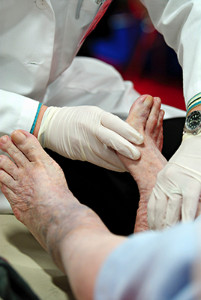 When thinking about our body and our general health, the feet are often overlooked and ignored until considerable pain or changes occur. This habit can be especially damaging for seniors, who are more likely to experience the effects of neglecting foot health at their older age. Many aches and pains are caused by ill-fitting shoes that don’t offer support. Underlying conditions, like diabetes, rheumatoid arthritis, weight gain, and prior injury, can also be a cause of pain. Outside of the podiatrist’s office, seniors can maintain foot health by ensuring that their feet are kept clean and by trimming their nails to an appropriate length.
When thinking about our body and our general health, the feet are often overlooked and ignored until considerable pain or changes occur. This habit can be especially damaging for seniors, who are more likely to experience the effects of neglecting foot health at their older age. Many aches and pains are caused by ill-fitting shoes that don’t offer support. Underlying conditions, like diabetes, rheumatoid arthritis, weight gain, and prior injury, can also be a cause of pain. Outside of the podiatrist’s office, seniors can maintain foot health by ensuring that their feet are kept clean and by trimming their nails to an appropriate length.
Proper foot care is something many older adults forget to consider. If you have any concerns about your feet and ankles, contact one of our podiatrists from Lovely Foot Associates, PC. Our doctors can provide the care you need to keep you pain-free and on your feet.
The Elderly and Their Feet
As we age we start to notice many changes in our body, but the elder population may not notice them right away. Medical conditions may prevent the elderly to take notice of their foot health right away. Poor vision is a lead contributor to not taking action for the elderly.
Common Conditions
Susceptible Infections
Diabetes and poor circulation can cause general loss of sensitivity over the years, turning a simple cut into a serious issue.
If you have any questions please feel free to contact our office located in Johnstown, PA . We offer the newest diagnostic and treatment technologies for all your foot and ankle needs.
Read more about Elderly and their Feet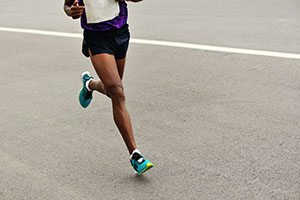 Running shoe companies are looking to 3D-printing to provide customers with the comfort and customization many runners require in running shoes. A new 3D-printing process, “selective laser sintering,” creates components of a shoe one layer at a time and allows companies to engineer the structure of a shoe, from outsole to midsole. Companies such as Nike, New Balance, and Adidas have used 3D-printing in recent releases. The new process will allow athletic companies to create one-of-a-kind models from the bottom up and to hone in quickly on custom fits for their clients and their running shoe needs.
Running shoe companies are looking to 3D-printing to provide customers with the comfort and customization many runners require in running shoes. A new 3D-printing process, “selective laser sintering,” creates components of a shoe one layer at a time and allows companies to engineer the structure of a shoe, from outsole to midsole. Companies such as Nike, New Balance, and Adidas have used 3D-printing in recent releases. The new process will allow athletic companies to create one-of-a-kind models from the bottom up and to hone in quickly on custom fits for their clients and their running shoe needs.
If you are a runner, wearing the right running shoe is essential. For more information, contact one of our podiatrists from Lovely Foot Associates, PC. Our doctors can provide the care you need to keep you pain-free and on your feet.
Choosing the Right Running Shoe for Your Foot Type
To increase performance and avoid the risk of injury, it is important to choose the right running shoe based on your foot type. The general design of running shoes revolves around pronation, which is how the ankle rolls from outside to inside when the foot strikes the ground.
If you have any questions please feel free to contact our office located in Johnstown, PA . We offer the newest diagnostic and treatment technologies for all your foot and ankle needs.
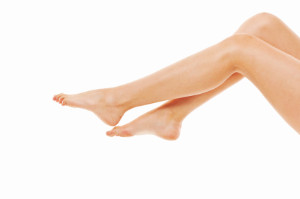 An ingrown toenail is something that may be preventable by taking the right steps. One of the most important precautions you can take to avoid getting an ingrown toenail is to make sure your shoes fit properly. Your shoes should have space in the front so that your toes have room to move around. Your toes should be able to “rest flat and straight” inside of your shoe. Another way to prevent ingrown toenails is to cut your toenails straight across instead of in a rounded shape. Cutting them straight across will allow your nails to grow out correctly, instead of growing down into your toe. Although there are ways you can prevent ingrown toenails, you should always see a podiatrist if you see any signs of infection.
An ingrown toenail is something that may be preventable by taking the right steps. One of the most important precautions you can take to avoid getting an ingrown toenail is to make sure your shoes fit properly. Your shoes should have space in the front so that your toes have room to move around. Your toes should be able to “rest flat and straight” inside of your shoe. Another way to prevent ingrown toenails is to cut your toenails straight across instead of in a rounded shape. Cutting them straight across will allow your nails to grow out correctly, instead of growing down into your toe. Although there are ways you can prevent ingrown toenails, you should always see a podiatrist if you see any signs of infection.
Ingrown toenails can become painful if they are not treated properly. For more information about ingrown toenails, contact one of our podiatrists of Lovely Foot Associates, PC. Our doctors can provide the care you need to keep you pain-free and on your feet.
Ingrown Toenails
Ingrown toenails occur when a toenail grows sideways into the bed of the nail, causing pain, swelling, and possibly infection.
Causes
Prevention
Because ingrown toenails are not something found outside of shoe-wearing cultures, going barefoot as often as possible will decrease the likeliness of developing ingrown toenails. Wearing proper fitting shoes and using proper cutting techniques will also help decrease your risk of developing ingrown toenails.
Treatment
Ingrown toenails are a very treatable foot condition. In minor cases, soaking the affected area in salt or antibacterial soaps will not only help with the ingrown nail itself, but also help prevent any infections from occurring. In more severe cases, surgery is an option. In either case, speaking to your podiatrist about this condition will help you get a better understanding of specific treatment options that are right for you.
If you have any questions please feel free to contact our office located in Johnstown, PA . We offer the newest diagnostic and treatment technologies for all your foot and ankle needs.
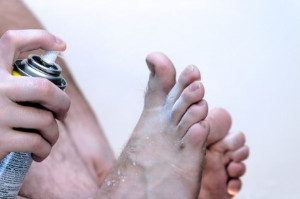 “Up to 70% of Americans contract athlete’s foot at some time in their lives,” cites Contemporary Clinic. Athlete’s foot is a fungal infection of the foot that many people fall victim to at some point in their lives. Athlete’s foot can be contracted either by having direct contact with someone who has the infection or by being exposed to contaminated surfaces or items. Those who use community swimming pools and showers are most at risk. Other causes of the condition include wearing heavy or tight shoes, as this creates an overly warm and moist environment that is ideal for fungal growth.
“Up to 70% of Americans contract athlete’s foot at some time in their lives,” cites Contemporary Clinic. Athlete’s foot is a fungal infection of the foot that many people fall victim to at some point in their lives. Athlete’s foot can be contracted either by having direct contact with someone who has the infection or by being exposed to contaminated surfaces or items. Those who use community swimming pools and showers are most at risk. Other causes of the condition include wearing heavy or tight shoes, as this creates an overly warm and moist environment that is ideal for fungal growth.
Athlete’s foot is an inconvenient condition that can be easily reduced with the proper treatment. If you have any concerns about your feet and ankles, contact one of our podiatrists from Lovely Foot Associates, PC. Our doctors will treat your foot and ankle needs.
Athlete’s Foot: The Sole Story
Athlete's foot, also known as tinea pedis, can be an extremely contagious foot infection. It is commonly contracted in public changing areas and bathrooms, dormitory style living quarters, around locker rooms and public swimming pools, or anywhere your feet often come into contact with other people.
Solutions to Combat Athlete’s Foot
Athlete’s foot can cause many irritating symptoms such as dry and flaking skin, itching, and redness. Some more severe symptoms can include bleeding and cracked skin, intense itching and burning, and even pain when walking. In the worst cases, Athlete’s foot can cause blistering as well. Speak to your podiatrist for a better understanding of the different causes of Athlete’s foot, as well as help in determining which treatment options are best for you.
If you have any questions please feel free to contact our office located in Johnstown, PA . We offer the newest diagnostic and treatment technologies for all your foot and ankle needs.
Read more about Athlete's Foot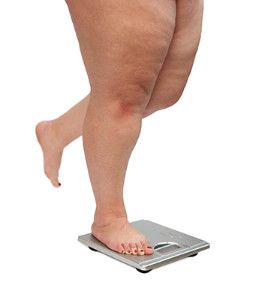 According to findings presented at the American College of Rheumatology Annual Meeting, patients with higher weights are more susceptible to foot pain. Instructor of Medicine Alyssa B. Dufour of Harvard Medical School and her colleagues studied 28 different measures over 57 years to identify the trajectories of weight in the Framingham Foot Study. After five such trajectories were established, patterns began to develop that showed a correlation between higher weight over time and higher levels of foot pain.
According to findings presented at the American College of Rheumatology Annual Meeting, patients with higher weights are more susceptible to foot pain. Instructor of Medicine Alyssa B. Dufour of Harvard Medical School and her colleagues studied 28 different measures over 57 years to identify the trajectories of weight in the Framingham Foot Study. After five such trajectories were established, patterns began to develop that showed a correlation between higher weight over time and higher levels of foot pain.
Obesity has become very problematic at this point in time and can have extremely negative effects on the feet. If you’re an obese individual and are concerned about your feet, contact one of our podiatrists from Lovely Foot Associates, PC. Our doctors can provide the care you need to keep you pain-free and on your feet.
Obesity and Your Feet
Since your feet are what support your entire weight when standing, any additional weight can result in pain and swelling. Being overweight is one of the main contributors to foot complications.
Problems & Complications
Extra Weight – Even putting on just a few extra pounds could create serious complications for your feet. As your weight increases, your balance and body will shift, creating new stresses on your feet. This uneven weight distribution can cause pain, even while doing the simplest tasks, such as walking.
Diabetes – People who are overweight are at serious risk of developing type-2 diabetes, which has a drastic impact on the health of your feet. As you get older, your diabetes might worsen, which could lead to loss of feeling in your feet, sores, and bruises. You could also become more prone to various infections.
Plantar fasciitis – Pressure and stress that is placed on muscles, joints, and tendons can trigger plantar fasciitis, which is an inflammation of tissue that forms along the bottom of the foot.
If you have any questions please feel free to contact our office located in Johnstown, PA . We offer the newest diagnostic and treatment technologies for all your foot and ankle needs.
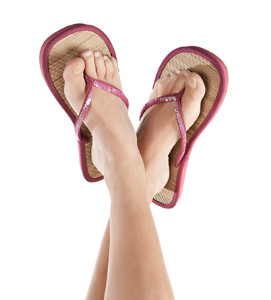 As warm weather approaches, many people choose to wear flip-flops. The flip-flop has been a popular summer shoe for decades, however there are many podiatrists that would caution against its usage. Foot injuries may occur as a result of wearing flip-flops, including stress fractures and blisters. According to the Consumer Product Safety Commission on Emergency Room Visits, 25,300 out of 198,437 emergency room visits due to footwear were caused by wearing flip-flops. Although some of these injuries were minor cuts on the toes, others were more serious such as sprains and tendinitis.
As warm weather approaches, many people choose to wear flip-flops. The flip-flop has been a popular summer shoe for decades, however there are many podiatrists that would caution against its usage. Foot injuries may occur as a result of wearing flip-flops, including stress fractures and blisters. According to the Consumer Product Safety Commission on Emergency Room Visits, 25,300 out of 198,437 emergency room visits due to footwear were caused by wearing flip-flops. Although some of these injuries were minor cuts on the toes, others were more serious such as sprains and tendinitis.
Flip-flops are not always the best choice of footwear. If you have any concerns about your feet or ankles, contact one of our podiatrists from Lovely Foot Associates, PC. Our doctors will assist you with all of your foot and ankle needs.
Flip-Flops and Feet
When the weather starts warming up, people enjoy wearing flip-flops. Flip-flops are comfortable, stylish, and easy to slip on and off; they're perfect for any summer beach goer. However, these shoes can cause harm to the feet.
How Can Flip-Flops Affect Me Long-Term?
Are There Injuries Associated with Flip-Flops?
Yes. Since flip-flops are relatively weak and do not provide the same amount of support as sneakers, people who wear flip-flops regularly are more susceptible to injuries. On top of that, the open nature of the shoe makes your feet more prone to other problems, such as cuts and even infections. Common injuries and ailments include:
I like Wearing Flip-Flops. Are There Safe Alternatives?
When buying flip-flops, try to find ones that have sturdy soles and that are made of high-quality materials that will support for your feet. These flip-flops will cost more but will also last longer as a result.
If you have any questions please feel free to contact our office located in Johnstown, PA . We offer the newest diagnostic and treatment technologies for all your foot and ankle needs.
Read more about Flip Flops and Feet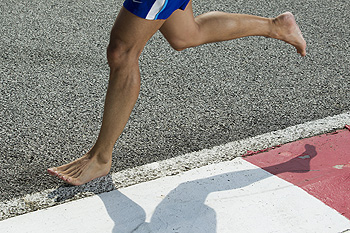 There are a lot of debates about whether or not barefoot running is beneficial for the feet. Although research suggests that there are several benefits from running barefoot, there are also plenty of risks. Running without shoes is proven to be hazardous due to dangerous debris or sharp rocks that may be on the ground. In order to prevent some of these issues, barefoot shoes were created. These shoes are able to simulate the feeling of running barefoot while reducing the dangers that may result from it.
There are a lot of debates about whether or not barefoot running is beneficial for the feet. Although research suggests that there are several benefits from running barefoot, there are also plenty of risks. Running without shoes is proven to be hazardous due to dangerous debris or sharp rocks that may be on the ground. In order to prevent some of these issues, barefoot shoes were created. These shoes are able to simulate the feeling of running barefoot while reducing the dangers that may result from it.
Barefoot running has its own share of benefits and disadvantages. If you have any concerns about your feet or ankles, contact one of our podiatrists from Lovely Foot Associates, PC. Our doctors will treat your foot and ankle needs.
Barefoot Running
The Impact of Barefoot Running
The Advantages of Barefoot Running
The Drawbacks of Barefoot Running
So, what can runners do to make barefoot running safe? It’s best to make a slow transition from running shoes to barefoot running. Once the feet begin to adjust, try walking, then jogging and gradually increasing the distance. Minimalist running shoes may also be an option.
If you have any questions please feel free to contact one of our office located in Johnstown, PA . We offer the newest diagnostic and treatment technologies for all your foot and ankle needs.
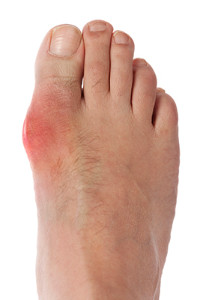 Gout, a form of arthritis that causes intense pain in the body’s joints, can be a particularly problematic condition for truck drivers due to their lifestyle and eating habits. While sedentariness is not a cause, eating purine-rich foods, such as meats, gravy, and beer, certainly is. Other factors include being overweight, diabetic, over the age of 45, having high cholesterol, hypertension, taking certain medications for said hypertension, and not drinking enough water. Prevention is key in combating gout, and this can be achieved by avoiding risk foods and staying hydrated.
Gout, a form of arthritis that causes intense pain in the body’s joints, can be a particularly problematic condition for truck drivers due to their lifestyle and eating habits. While sedentariness is not a cause, eating purine-rich foods, such as meats, gravy, and beer, certainly is. Other factors include being overweight, diabetic, over the age of 45, having high cholesterol, hypertension, taking certain medications for said hypertension, and not drinking enough water. Prevention is key in combating gout, and this can be achieved by avoiding risk foods and staying hydrated.
Gout is a foot condition that requires certain treatment and care. If you are seeking treatment, contact one of our podiatrists from Lovely Foot Associates, PC. Our doctors will treat your foot and ankle needs.
What Is Gout?
Gout is a type of arthritis caused by a buildup of uric acid in the bloodstream. It often develops in the foot, especially the big toe area, although it can manifest in other parts of the body as well. Gout can make walking and standing very painful and is especially common in diabetics and the obese.
People typically get gout because of a poor diet. Genetic predisposition is also a factor. The children of parents who have had gout frequently have a chance of developing it themselves.
Gout can easily be identified by redness and inflammation of the big toe and the surrounding areas of the foot. Other symptoms include extreme fatigue, joint pain, and running high fevers. Sometimes corticosteroid drugs can be prescribed to treat gout, but the best way to combat this disease is to get more exercise and eat a better diet.
If you have any questions please feel free to contact our office located in Johnstown, PA . We offer the newest diagnostic and treatment technologies for all your foot and ankle needs.
Read more about Everything You Need to Know About Gout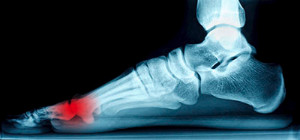 Sesamoiditis is a condition that involves inflammation of the sesamoid bones in the feet. People who partake in physical activities that put stress on the toe-end of the foot are at a higher risk of developing sesamoiditis. The condition may also be caused by wearing improper footwear like high heels. The primary symptoms of sesamoiditis are pain and inflammation in the feet, and there usually aren’t any visual signs of the condition. Physical therapy is usually the first step in the route to treating sesamoiditis, and it is important that the patient does not put their feet under a lot of stress during the process.
Sesamoiditis is a condition that involves inflammation of the sesamoid bones in the feet. People who partake in physical activities that put stress on the toe-end of the foot are at a higher risk of developing sesamoiditis. The condition may also be caused by wearing improper footwear like high heels. The primary symptoms of sesamoiditis are pain and inflammation in the feet, and there usually aren’t any visual signs of the condition. Physical therapy is usually the first step in the route to treating sesamoiditis, and it is important that the patient does not put their feet under a lot of stress during the process.
Sesamoiditis is an unpleasant foot condition characterized by pain in the balls of the feet. If you think you’re struggling with sesamoiditis, contact one of our podiatrists of Lovely Foot Associates, PC. Our doctors will treat your condition thoroughly and effectively.
Sesamoiditis
Sesamoiditis is a condition of the foot that affects the ball of the foot. It is more common in younger people than it is in older people. It can also occur with people who have begun a new exercise program, since their bodies are adjusting to the new physical regimen. Pain may also be caused by the inflammation of tendons surrounding the bones. It is important to seek treatment in its early stages because if you ignore the pain, this condition can lead to more serious problems such as severe irritation and bone fractures.
Causes of Sesamoiditis
Treatment for sesamoiditis is non-invasive and simple. Doctors may recommend a strict rest period where the patient forgoes most physical activity. This will help give the patient time to heal their feet through limited activity. For serious cases, it is best to speak with your doctor to determine a treatment option that will help your specific needs.
If you have any questions please feel free to contact our office located in Johnstown, PA . We offer the newest diagnostic and treatment technologies for all your foot and ankle needs.